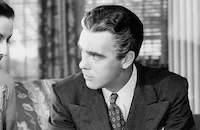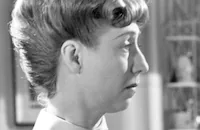The Star did not do well at the box office, but Bette Davis described it as "one of the best scripts ever written about a movie mad actress." Davis particularly enjoyed that it was written about Joan Crawford. In 1983, Davis told Playboy, "Oh, yes, that was Crawford. I wasn't imitating her, of course. It was just that whole approach of hers to the business as regards the importance of glamour and all of the offstage things. I adored the script."
The Star was written by close friends of Joan Crawford's, Katherine Albert and Dale Eunson. The couple's twenty-five year friendship with the actress ended in 1952 as filming on the movie began. Eunson stated that contrary to popular belief, Crawford was never approached to do the film, "Frankly, it was a little too close to her, which is one reason Bette liked it. Bette could play Joan Crawford to the hilt."
According to Shaun Considine in Bette and Joan, Joan Crawford was aware the film was about her. Considine adds the actress found a way to take revenge on the authors. Joan Crawford was godmother to Katherine Albert and Dale Eunson's daughter. During the filming of The Star, the 17-year-old girl decided she wanted to get married. The Eunsons asked Crawford to talk to the girl. But instead of talking her out of marriage, Crawford arranged the wedding in her house and later called the Eunsons to tell them their daughter was married. According to Dale Eunson, "She set the whole thing up behind our backs. She called the judge, and the press. She didn't invite us to our own daughter's wedding."
Fourteen-year-old Natalie Wood played Bette Davis' daughter in The Star. The two developed a life-long friendship during the filming, thanks in part to one incident. The young Natalie Wood could not swim and was frightened of the water. All along she had told the director she would not be able to do a scene that called for her to jump off a boat and into the ocean. The teen was in tears when Bette Davis appeared. According to Natalie Wood's sister Lana, Davis said Natalie would not do the scene and "if any more orders to the contrary were attempted, Miss Davis would walk off the set and close down the picture." Lana states her sister, "always said that it was Bette Davis who first caused her to realize that speaking up and out wasn't a bad thing to do."
Bette Davis was nominated for Best Actress, but lost out to Shirley Booth for her role in Come Back, Little Sheba. Davis had been offered the Shirley Booth role after The Star but turned it down. Davis later said turning down that role was "one of the really great mistakes of my career."
Director: Stuart Heisler
Producer: Bert E. Friedlob
Screenplay: Katherine Albery and Dale Eunson
Cinematography: Ernest Laszlo
Art Direction: Boris Leven
Music: Victor Young
Cast: Bette Davis (Margaret Elliot), Sterling Hayden (Jim Johannson), Natalie Wood (Gretchen), Warner Anderson (Harry Stone), Minor Watson (Joe Morrison), June Travis (Mrs. Morrison), Barbara Lawrence (Herself).
BW-91m.
by Deborah Looney





























